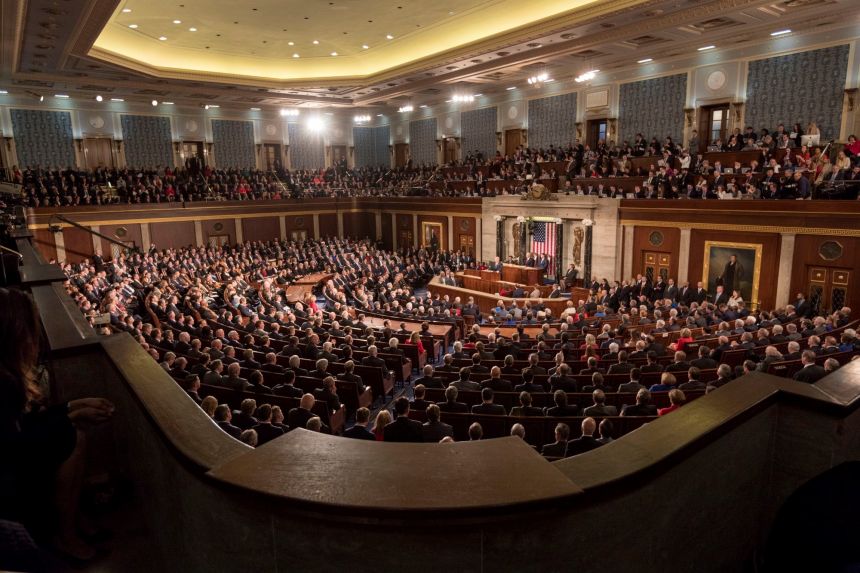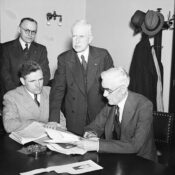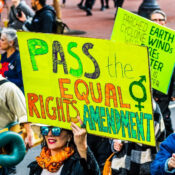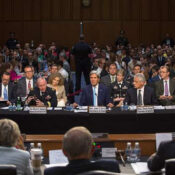You might have guessed that President Trump’s 2019 State of the Union address was the most delayed from its originally planned date, but we have some other interesting facts to share about the president’s annual report on America.
Current Count: The 2019 State of the Union address will be the 96th. All presidents but two have delivered at least one of them. The two exceptions are William Henry Harrison and James Garfield, who died before they reached their first January in office.
First Address: January 8, 1790, by George Washington in New York’s Federal Hall.
Longest: 1981, delivered by Jimmy Carter. In his first three addresses, his speeches had run about 36 minutes. But in this year, he unloaded a 33,667-page monster on Congress. It would have taken over four hours to read it aloud. But fortunately, Carter broke with tradition and submitted this magnum opus on paper. The longest spoken address was delivered by Bill Clinton in 1995. At 9,190 words long, it took Clinton one hour, twenty-nine minutes to read it aloud. Donald Trump came within nine minutes of breaking that record in 2018.
Shortest: George Washington at 1,089 words, which would have taken him about eight minutes to read. The second shortest address was delivered by Richard Nixon in 1972 and took only 29 minutes to deliver.
Average Length: 10,000 words in the 19th Century, 5,000 in the 20th Century.
First Called “The State of the Union”: 1942, by Franklin Roosevelt. Previously it was known as “the President’s Annual Address.”
Longest Delay: Trump’s address in 2019. Previously the only delayed address was delivered in 1986. President Reagan had been scheduled to speak to Congress on January 28, but when the Challenger space shuttle exploded that day, he addressed the nation on the tragedy and moved his speech back a week.
First Radio Broadcast: 1923, by Calvin Coolidge. There were already radios in over 2.5 million homes. An estimated one million Americans tuned in that day.
First Television Broadcast: Harry Truman’s address in 1947.
First Webcast: George W. Bush’s address 2002.
First Use of Phrase “My Fellow Americans”: Calvin Coolidge first uttered the phrase in a 1920 speech, and Franklin D. Roosevelt often used it in his radio broadcasts, but it was Lyndon Johnson, in 1964, who first used it in a State of the Union address.
First Opposition Response: In 1966, Republicans Everett Dirksen and Gerald Ford, then minority leaders of the Senate and House respectively, responded to Johnson’s address.
Most Unexpected: Gerald Ford startled everyone when he departed from his 1975 script to declare “The state of the union is not good.” Grover Cleveland’s 1887 address, which described a planned overhaul of the tariff, proved so divisive that it split the Democratic Party and contributed to Cleveland’s failed run for re-election in 1888.
The Only Person Who Can’t Attend: One member of the president’s cabinet stays away from Congress during the address so that a disaster in the Capitol building wouldn’t wipe out the entire administration. In 2018, Sonny Perdue, Trump’s Secretary of Agriculture was the Designated Survivor.
The Most Significant Addresses: Four speeches touching on foreign policy, had lasting impacts:
- In his 1823 address, James Monroe declared the U.S. would not tolerate European colonization of any nation in the Americas.
- In 1905, Teddy Roosevelt added a corollary to the Monroe Doctrine: The U.S. had a responsibility to preserve order and protect life and property in all countries in the Americas.
- Franklin D. Roosevelt, in 1941, introduced the idea of mankind’s basic rights in all nations with his concept of “The Four Freedoms.”
- And in 2002, George W. Bush warned the world against the nations that comprised the “Axis of Evil.”
Featured image: Official White House Photo by D. Myles Cullen
Become a Saturday Evening Post member and enjoy unlimited access. Subscribe now



